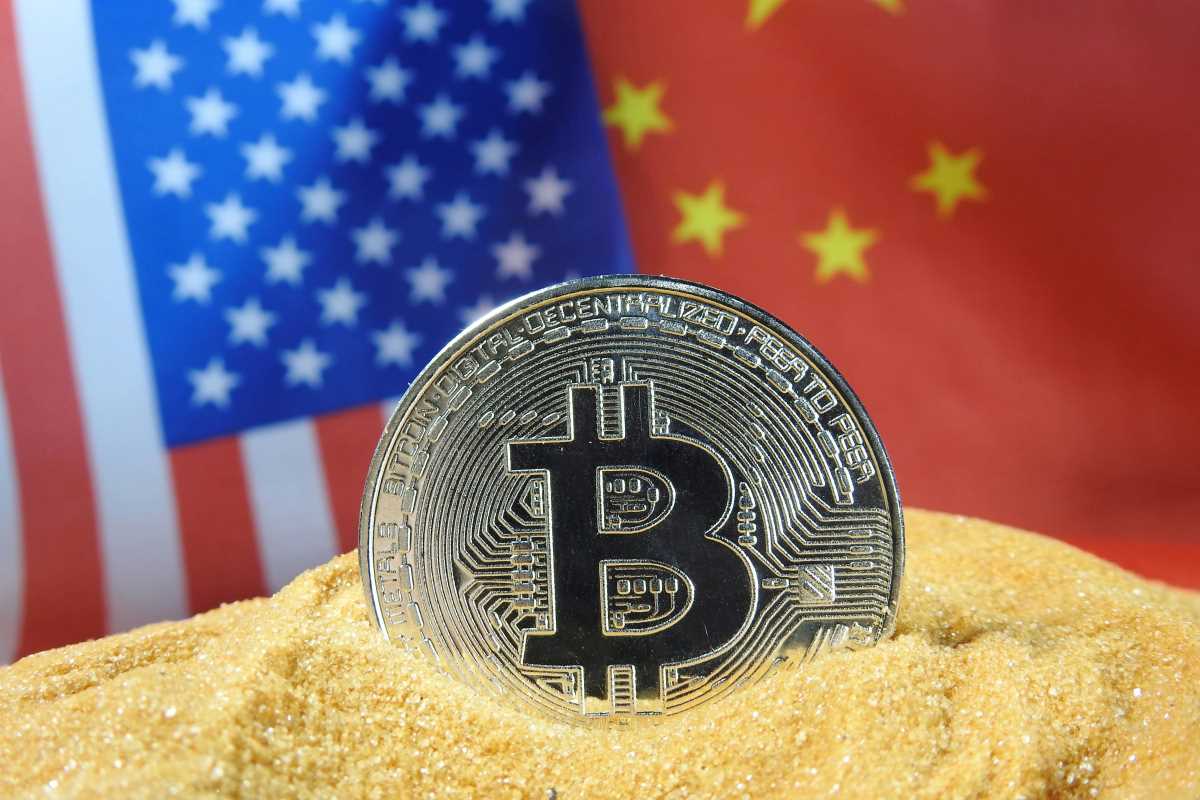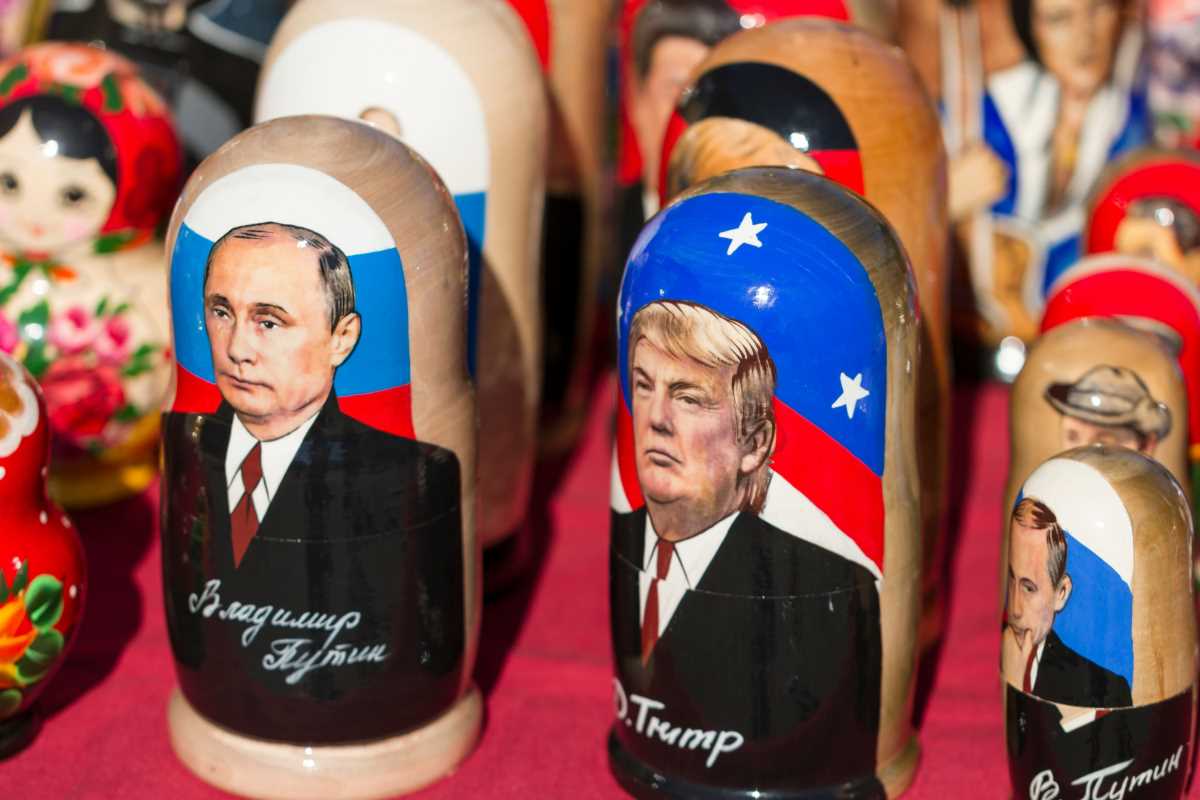Few things stir global markets quite like the trading dynamics between the United States and China. Toss in the unpredictable world of cryptocurrency, particularly Bitcoin, and you’ve got yourself a recipe for economic intrigue with more twists than a mystery novel.
By April 2025, U.S.-China trade relations had reached a new chapter, loaded with tariffs, negotiations, and plenty of passive-aggressive press releases. Amid this landscape, Bitcoin emerged not just as a digital asset but also as a kind of financial chameleon, responding to economic shifts and growing tensions in fascinating ways.
Bitcoin And the U.S.-China Trade Crossfire
The tug-of-war between the U.S. and China has always impacted global currencies and investment flows. But when it comes to Bitcoin, a decentralized currency immune to borders, this rivalry adds an extra layer of complexity. With China’s continued dominance in cryptocurrency mining and the U.S.’s evolving regulatory landscape, Bitcoin has become a hot topic in trade talks (even if unofficially).
China’s historic crackdown on crypto back in 2021 left a dent in its mining operations, but by 2025, its efforts to re-enter the scene under a heavily regulated framework were paying off. State-controlled mining facilities are now among the largest and greenest in the world, buoyed by the government's broader push for technological self-reliance. This resurgence didn’t go unnoticed by the U.S., which has watched China’s crypto comeback both with admiration and suspicion.
On the flip side, the U.S. has been grappling with its own Bitcoin agenda. While Silicon Valley remains a hub for blockchain innovation, regulatory clarity has been slow to materialize, leaving investors in a state of perpetual limbo. The Securities and Exchange Commission sporadically drops vague directives, leaving questions about taxation, trading, and Bitcoin’s legal classification largely unanswered.
Between these two superpowers lies a sea of investors, both institutional and retail, using Bitcoin as a hedge against trade-induced volatility. Tariff announcements and currency fluctuations create ripple effects for Bitcoin’s price. When the dollar stumbles under trade tensions, Bitcoin often experiences a surge in demand, cementing its role as a true digital gold.
Trade Tensions And Bitcoin’s Market Dynamics
If you think traditional stock markets react dramatically to trade news, wait until you meet the world of Bitcoin. U.S.-China tensions in April 2025 have been especially peculiar, as a fresh round of financial sparring over tech exports and manufacturing tariffs coincides with a Bitcoin bull run. This delicate dance of economic titans has played out in ways that deeply influence Bitcoin’s market dynamics.
Firstly, Bitcoin thrives on uncertainty, and U.S.-China trade relations provide it in spades. When talks derail or tariffs are announced, traditional markets often slide as anxiety spreads across investors. Bitcoin, meanwhile, often becomes a refuge, its value climbing as people seek alternatives to government-backed currencies. Similarly, any temporary resolution in trade disputes can cause Bitcoin to briefly dip as confidence in fiat currencies rebounds.
Mining costs are another aspect of the story. With China’s resurgence in state-regulated Bitcoin mining, energy-intensive operations have become a lightning rod for discussion. The U.S., eager to catch up, has incentivized domestic mining through renewable energy subsidies. Bitcoin miners globally wait with bated breath whenever trade policies between these nations impact the hardware industry, where supply chains are deeply reliant on Chinese manufacturing.
The rise of Bitcoin as a medium for cross-border transactions has also added spice to trade-related dynamics. Businesses, especially in countries adversely affected by U.S.-China relations, are increasingly using Bitcoin to circumvent currency exchanges dominated by the dollar or the yuan. The ease of using Bitcoin lowers costs and avoids occasional currency manipulation accusations, which perpetually lurk in the trade dispute narrative.
One darker corner of the trade dispute lies in sanctions and embargoes. Bitcoin is being watched closely as a potential tool for circumventing these economic measures. While most transactions remain legal and straightforward, there’s no denying the crypto space’s shadowier reputation. Herein lies a paradox. Both the U.S. and China are wary of Bitcoin's unregulated edges but recognize its growing influence in the modern economic ecosystem.
Regulation, Adoption, And the Bitcoin Balancing Act
Bitcoin adoption in the U.S. and China walks a tightrope. Regulations in both countries have created hurdles, but the appetite for widespread Bitcoin integration is impossible to ignore. By April 2025, it’s clear that while both nations approach Bitcoin differently, their moves resonate across the globe.
The U.S. has massively increased its scrutiny of cryptocurrency exchanges. Several high-profile investigations into money laundering have resulted in exchanges moving offshore. However, crypto’s potential to foster innovation has led to initiatives aimed at balancing regulation with flexibility. The Federal Reserve even hinted at backing a CBDC (Central Bank Digital Currency) designed not to replace Bitcoin but to complement it, aiming to keep the U.S. competitive in fintech.
China’s approach remains a fascinating contradiction. On one hand, the government strictly controls cryptocurrency activities within its borders, allowing only highly-regulated state mining and prohibitively taxing crypto transactions. On the other, its central bank has deeply expanded its digital yuan project, effectively borrowing blockchain’s appeal while maintaining tight controls. This duality keeps crypto enthusiasts guessing about China's long-term Bitcoin strategy.
Globally, this has translated to Bitcoin adoption driven not by policy but by necessity. Countries feeling squeezed by U.S.-China dynamics have embraced Bitcoin as a neutral alternative. Developing nations facing sanctions or currency instability turn to Bitcoin for financial rescue, navigating trade bottlenecks with digital efficiency. This adoption feeds into Bitcoin’s volatile market cycles, adding new layers of complexity whenever trade barriers shift.
Here’s the curious twist for both nations. Whether they regulate Bitcoin into a more defined space or leave it teetering on the fringes, its adoption continues to find fertile ground. Policy gaps leave opportunities for decentralized networks to flourish, reminding these economic superpowers that Bitcoin’s decentralized ethos is its greatest strength.
Broader Implications of the Bitcoin-Trade Nexus
Bitcoin’s entanglement with U.S.-China trade frictions extends far beyond these two economic titans. Its fluctuating valuation and evolving role in cross-border economic flows have set the stage for critical changes in how the world approaches digital finance.
Developing markets are the most visible beneficiaries. African and Latin American countries, for example, are increasingly leaning into Bitcoin to bypass supply chain disruptions caused by U.S.-China logistical disputes. Whether it’s agribusiness or small-scale retail, Bitcoin facilitates payments that sidestep restrictive banking conditions shaped by global trade policies.
Meanwhile, Europe cuts an intriguing figure in this saga. Watching from the sidelines, it has become a hotspot for crypto innovation, welcoming companies anxious over strict regulations in the U.S. or China. These shifts accelerate a global reallocation of Bitcoin investment capital, spreading crypto’s reach to unexpected corners.
The environmental impact can’t be overlooked either. With both the U.S. and China touting green ambitions, their policies increasingly impact Bitcoin's energy consumption debates. China’s state-controlled miners claim eco-friendly stewardship, but critics question the authenticity of such claims. American miners, meanwhile, are under pressure to adopt carbon-neutral operations, driven partly by state subsidies but also by community criticisms.
Security implications also arise. The decentralized nature of Bitcoin makes it a tempting target, both for cybercriminals and governments wary of its use in illicit transactions. If trade tensions turn hostile, the potential for each superpower to target the other’s crypto infrastructure looms as a new frontier for economic conflict.
Lastly, Bitcoin’s role in nudging international financial dialogues forward cannot be overstated. Whether it’s helping draft the first set of truly international tax laws or advocating for uniform global exchange rules, Bitcoin sits at the heart of a changing financial world.
The Future of Bitcoin and Trade Relations
By April 2025, it’s clear that Bitcoin has graduated beyond cryptocurrency niche audiences to become a central player in the broader economic drama of U.S.-China relations. It’s not just an asset; it’s a mirror reflecting the financial complexities, technological ambitions, and global strategies of both nations.
Looking ahead, one key question remains. Will the tug-of-war over Bitcoin lean toward regulation and control, or will it accelerate its decentralized promise? Any answer is likely to carry significant global consequences. Both nations know that Bitcoin’s power doesn’t reside in mining or trading; it’s rooted in trust and utility, forces neither government has fully mastered yet.
The road ahead doesn’t just belong to Bitcoin’s biggest miners or traders. It belongs to the nations, individuals, and institutions that understand its role in shaping the future of global economics. U.S.-China trade relations may drive much of the narrative, but Bitcoin itself thrives on the unpredictability of the players involved.
While these two global powerhouses will continue their cautious tango over tariffs and crypto policies, one thing’s certain. Bitcoin will keep rolling to its own rhythm, utterly undeterred by who’s in the lead.







